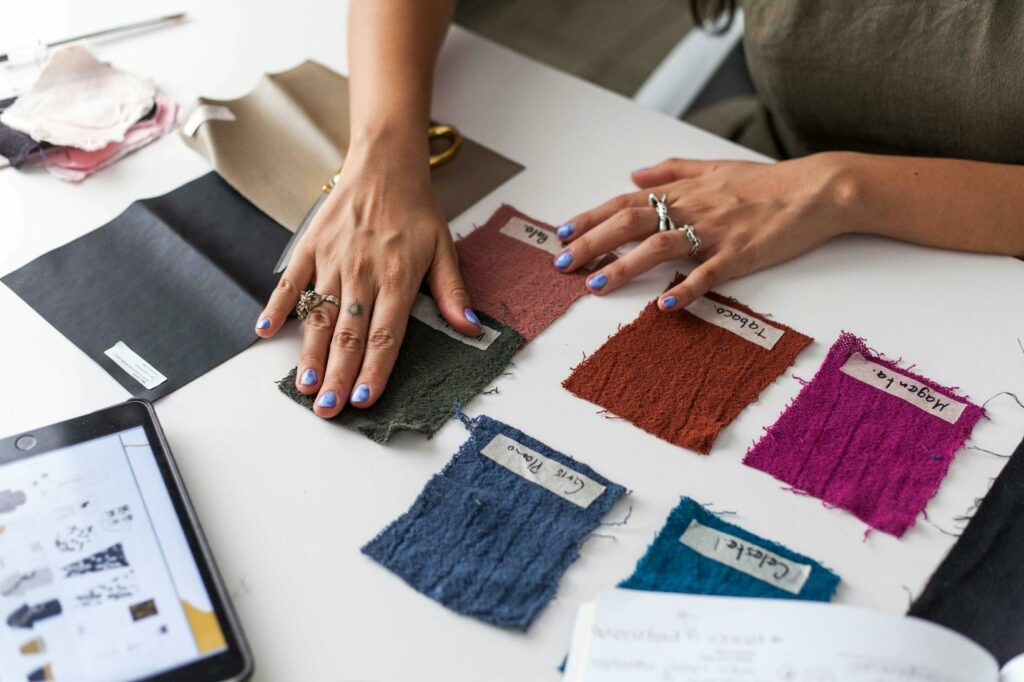Fashion design is a dynamic field where creativity meets craftsmanship, and the foundation of it all lies in the fashion design base. It’s the starting point, the canvas on which designers weave their visions into reality. Understanding the fundamentals of a fashion design base is crucial for aspiring designers looking to make their mark in the industry. From color theory to fabric selection, every detail plays a vital role in shaping the final masterpiece.
 In this article, we’ll delve into the importance of a strong fashion design base and explore how it sets the tone for successful creations. By mastering the basics, designers can elevate their work to new heights and stand out in a competitive landscape.
In this article, we’ll delve into the importance of a strong fashion design base and explore how it sets the tone for successful creations. By mastering the basics, designers can elevate their work to new heights and stand out in a competitive landscape.
Join us as we uncover the key elements that form the backbone of every stunning fashion piece.
Fashion Design Base
Fashion design base serves as the cornerstone for creating exceptional fashion pieces. Mastering key concepts such as color theory and fabric selection is crucial in the competitive fashion industry. Designers utilize the fashion design base to bring their creative visions to life, shaping the final masterpiece.
Key Concepts in Fashion Design
Designers must grasp essential principles to excel in fashion design. Understanding color theory is fundamental as it guides the selection of color palettes for garments, ensuring cohesiveness and aesthetic appeal. Proficiency in fabric selection is equally important, as different fabrics drape and behave uniquely, impacting the overall look of the design. Mastery of these key concepts empowers designers to create visually stunning and well-crafted fashion pieces.
The Evolution of Fashion Design Principles
Fashion design principles have evolved over time, reflecting changes in societal norms, technological advancements, and cultural influences. From traditional couture techniques to modern sustainable practices, the evolution of fashion design principles showcases adaptability and innovation in the industry. Designers navigate these changes to refine their craft, blending traditional foundations with contemporary trends to create timeless and trendsetting designs.
Elements of Fashion Design
Fashion design is a complex art that involves various key elements to create visually appealing and well-crafted pieces. Designers rely on a strong fashion design base to bring their creative visions to life successfully. Understanding fundamental concepts such as color theory and fabric selection is crucial in the competitive world of fashion.
Color Theory
 Color theory plays a vital role in fashion design as it significantly impacts the overall aesthetics of a garment. Designers must have a keen eye for color combinations, understanding how different hues, shades, and tones work together to evoke specific emotions or convey a particular message.
Color theory plays a vital role in fashion design as it significantly impacts the overall aesthetics of a garment. Designers must have a keen eye for color combinations, understanding how different hues, shades, and tones work together to evoke specific emotions or convey a particular message.
By leveraging color theory effectively, designers can create cohesive and visually striking collections that resonate with their target audience.
Fabric Selection and Textiles
The choice of fabrics and textiles is another essential aspect of fashion design. Designers must carefully select materials that not only align with their design vision but also offer the desired drape, texture, and durability. Factors such as fabric composition, weight, and weave play a significant role in determining the final look and feel of a garment. By choosing the right fabrics, designers can elevate the quality and aesthetic appeal of their creations, ensuring both style and comfort for the wearer.
The Role of Technology in Fashion Design
Technology plays a pivotal role in shaping the landscape of fashion design, revolutionizing traditional practices, and enhancing creativity in the industry. From advancements in fabric technology to the use of digital design tools, technology has become an indispensable asset for modern fashion designers.
Advancements in Fabric Technology
 Innovations in fabric technology have transformed the way fashion designers approach garment creation. High-performance fabrics like moisture-wicking materials, sustainable textiles, and smart fabrics embedded with technology have opened up new possibilities for designing functional and futuristic clothing.
Innovations in fabric technology have transformed the way fashion designers approach garment creation. High-performance fabrics like moisture-wicking materials, sustainable textiles, and smart fabrics embedded with technology have opened up new possibilities for designing functional and futuristic clothing.
These advancements not only offer enhanced comfort and durability but also enable designers to experiment with unconventional textures and structures, pushing the boundaries of traditional fashion norms.
Digital Design Tools
The integration of digital design tools has streamlined the design process for fashion creators, allowing for more efficient ideation, prototyping, and production. Computer-aided design (CAD) software, 3D modeling programs, and virtual prototyping tools have revolutionized the way designers conceptualize and visualize their ideas, offering a more precise and scalable approach to garment design.
By harnessing the power of digital tools, designers can iterate quickly, collaborate seamlessly, and bring their concepts to life with unparalleled accuracy and detail.



